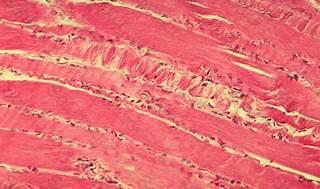CCRN-Adult AACN CCRN (Adult) - Direct Care Eligibility Pathway Free Practice Exam Questions (2025 Updated)
Prepare effectively for your AACN CCRN-Adult CCRN (Adult) - Direct Care Eligibility Pathway certification with our extensive collection of free, high-quality practice questions. Each question is designed to mirror the actual exam format and objectives, complete with comprehensive answers and detailed explanations. Our materials are regularly updated for 2025, ensuring you have the most current resources to build confidence and succeed on your first attempt.
The primary pathophysiology underlying acute respiratory failure in a patient with head trauma involves
The nurse who is caring for a patient following an esophagectomy notes new subcutaneous emphysema in the upper chest and neck. The nurse should expect an order for
The nurse is caring for a patient with neutropenia secondary to chemotherapy. When communicating dietary needs to the provider, the nurse should request which of the following to improve the patient's immune function?
An experienced nurse new to a unit believes the literature does not support current unit practice of a fixed-dose nitroglycerin IV (Tridil) infusion in all postoperative cardiac surgery patients for 24 hours. The nurse develops a proposal referencing peer-reviewed articles. Based on the proposal, unit leaders agree to remove the nitroglycerin IV (Tridil) infusion from the standard order set. The actions taken by the nurse are best described as
Which of the following are physiologic effects of pulmonary contusion?
A patient in septic shock is treated with a dopamine (Intropin) infusion of 10 mcg/kg/min. Which of the following indicates that this intervention has been effective?
A patient's blood culture report notes the presence of vancomycin resistant enterococcus. The nurse should place the patient in which type of isolation?
An unconscious patient in hepatic failure secondary to alcoholism becomes acutely hypoglycemic. Glucagon administration is contraindicated for this patient because glucagon
The first priority in management of an acute GI hemorrhage is
A patient lying on the left side in Trendelenburg position is in the correct position for postural drainage of which of the following lobes of the lungs?
Which of the following ECG changes is expected in a patient with a potassium concentration of 3.0 mEq/L?
While recording hourly ventilator checks on a patient who is being mechanically ventilated, the nurse notes that the PIP has gradually increased by 5 cm H2O over the past 4 hours. This increase indicates
A patient admits to a nurse that he has struggled with depression and feelings of isolation and abandonment since moving into a nursing home last year,
but he has recently started taking an anti-depressant. The patient states, "Sometimes it takes everything I've got just to go on each day." Which of the
following is the nurse's best initial response?
A patient is admitted for acute benzodiazepine overdose. Nursing interventions should include administration of
Which of the following is most often associated with damage to the alveolar capillary membrane secondary to aspiration?
Family members have been complaining about limited visiting hours. To facilitate a potential change in practice, a nurse should first
A common problem in patients with third-degree AV block is
The family of a patient with trauma believes that the patient is in pain and requests that a neighbor, a therapeutic touch practitioner, be allowed to see the patient. Unit policy allows visits by immediate family only. Which of the following is the most important consideration in a nurse's decision about facilitating the visit?
A patient with a hemorrhaging renal laceration has received two units of PRBCs and 500 mL of NS via IV bolus. Assessment reveals: BP 78/42; HR 148; UO 15 mL/hr; skin is cool and diaphoretic. While preparing the patient for emergency surgery, a nurse should administer
A patient was admitted 3 days ago for an overdose of acetaminophen (Tylenol). The patient is developing a decreasing level of consciousness. Which the following is the most likely finding?
 Hypokalemia
Hypokalemia